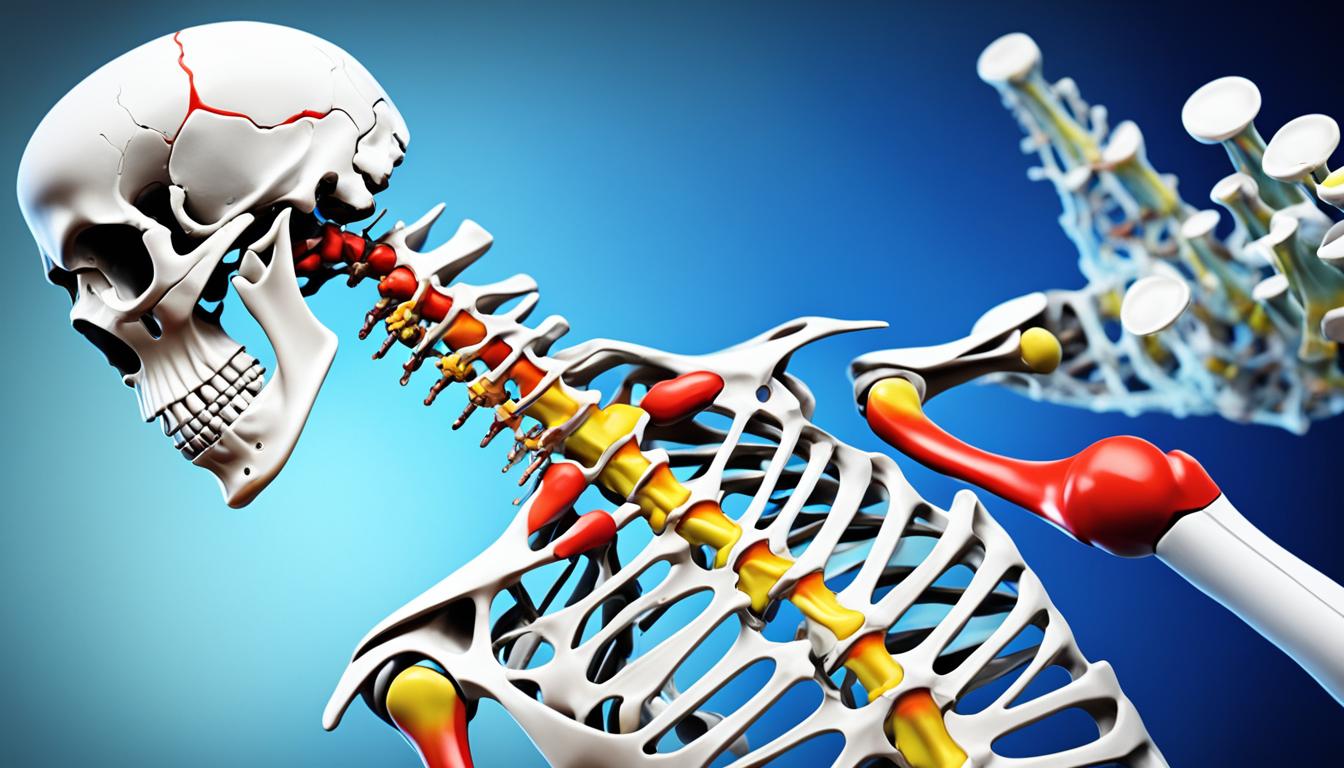A bone fracture is when a bone cracks or breaks due to a strong impact. There are many types of fractures, each having different symptoms. You might notice pain, swelling, or if the skin looks different.
Fractures can happen from accidents, too much pressure, or when bones are weak. For example, people with osteoporosis are more at risk.
To find a fracture, a doctor will do a physical check and might order X-rays or other scans. After diagnosis, the goal is to help the bone heal in the best way possible. This can involve setting the bone, putting on a cast, or even surgery.
Anyone with a fracture should prepare for a healing process that can take weeks or months. During this time, they might need physical therapy to get back their strength and movement.
Fractures can sometimes lead to further problems. These include bones healing in the wrong way or infections. But, there are steps you can take to lower your risk. A good diet, exercise, and avoiding falls are important.
Key Takeaways:
- A bone fracture is a crack or break in a bone caused by high force impact or stress.
- Fractures can be categorized into different types, such as closed fractures, compound fractures, avulsion fractures, comminuted fractures, and more.
- Symptoms of a fracture include pain, swelling, bruising, and the inability to move the affected area.
- Fractures can be caused by physical trauma, overuse, and health conditions that weaken the bones.
- Diagnosis involves a physical examination, X-ray, and sometimes additional imaging tests.
Stem Cell Therapy for Fracture Stress
Stem cell therapy is showing great promise in healing fractures. Scientists are looking into using various stem cells for this purpose. Mesenchymal stem cells (MSCs) are a key type, coming from places like bone marrow and fat.
MSCs can turn into different cell types, such as cells that make bones. They release substances that help heal and lower swelling. So they are very good for fixing fractures.
Endothelial progenitor cells (EPCs) are also getting lots of interest in fixing fractures. They are known to help build new blood vessels, which is important for healing.
Hematopoietic stem cells (HSCs) and adipose-derived stem cells (ADSCs) are also helpful in bone repair. ADSCs are especially promising for making new cartilage. This helps in regrowing damaged cartilage.
The body’s own response to injury, like releasing certain chemicals, is important. The environment where stem cells are found and work is also key to their success.
Doctors might also use ultrasound and bone grafts with stem cell therapy. They use these for harder fracture cases to help bones heal better.
Scientists are still researching to better use stem cells for fractures. They aim to find new, efficient ways to heal bones quicker and improve the lives of those with fractures.
Conclusion
Stress fractures come from too much pressure on bones, a common type of injury. Doctors can spot them with X-rays, MRIs, or CT scans. If you have a stress fracture, healing usually means resting more and changing how you move. Doctors might also manage pain and use physical therapy. Serious fractures might need a brace, a cast, or surgery to heal well.
Avoiding stress fractures is crucial for strong bones. Slowly making exercise harder, picking the right shoes, and mixing up your activities can lower your risk. Eating well to support your bones and listening to your body’s aches and pains during sports are also vital steps.
Stem cell therapy offers hope for quicker healing from stress fractures. This new approach is still being studied, with early signs being very positive. In the future, options for treating these fractures might get much better. If you think you have a stress fracture, seeing a doctor who knows about sports or bone injuries. They can give you the best care.

